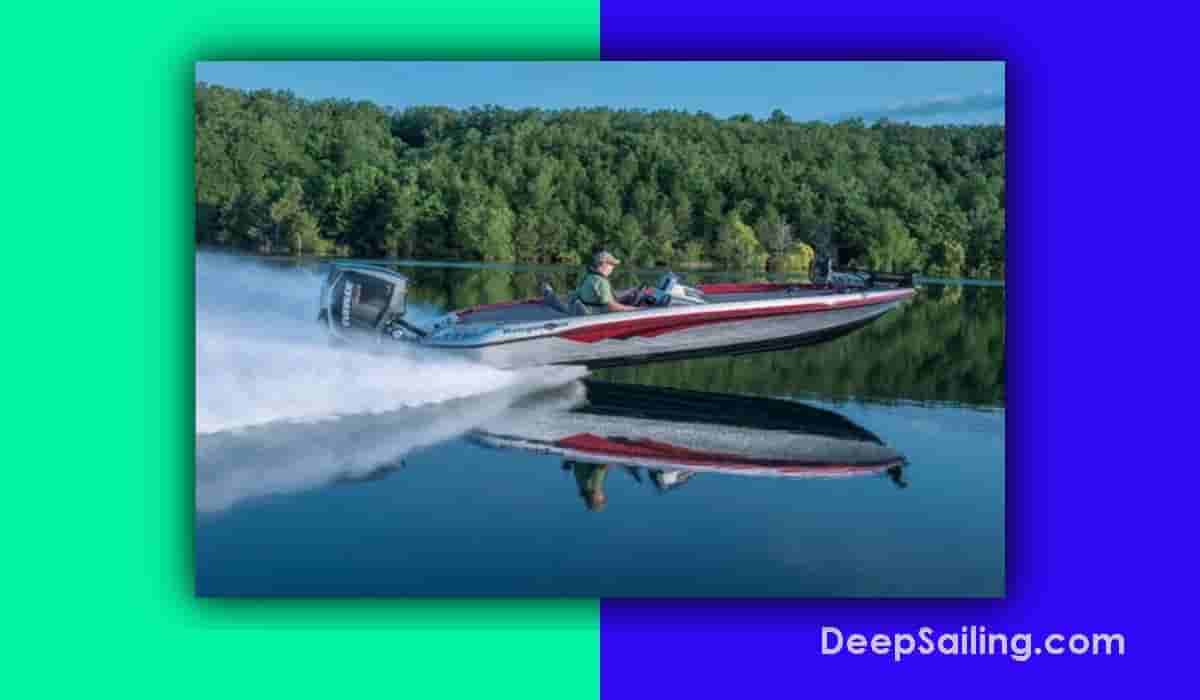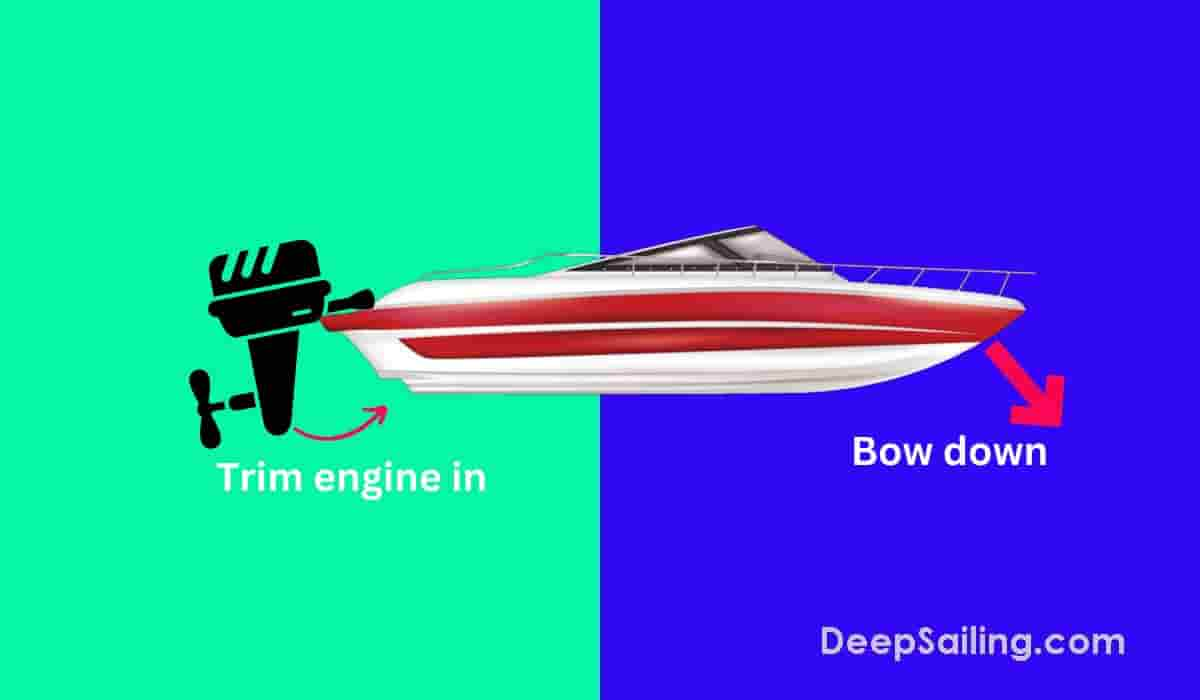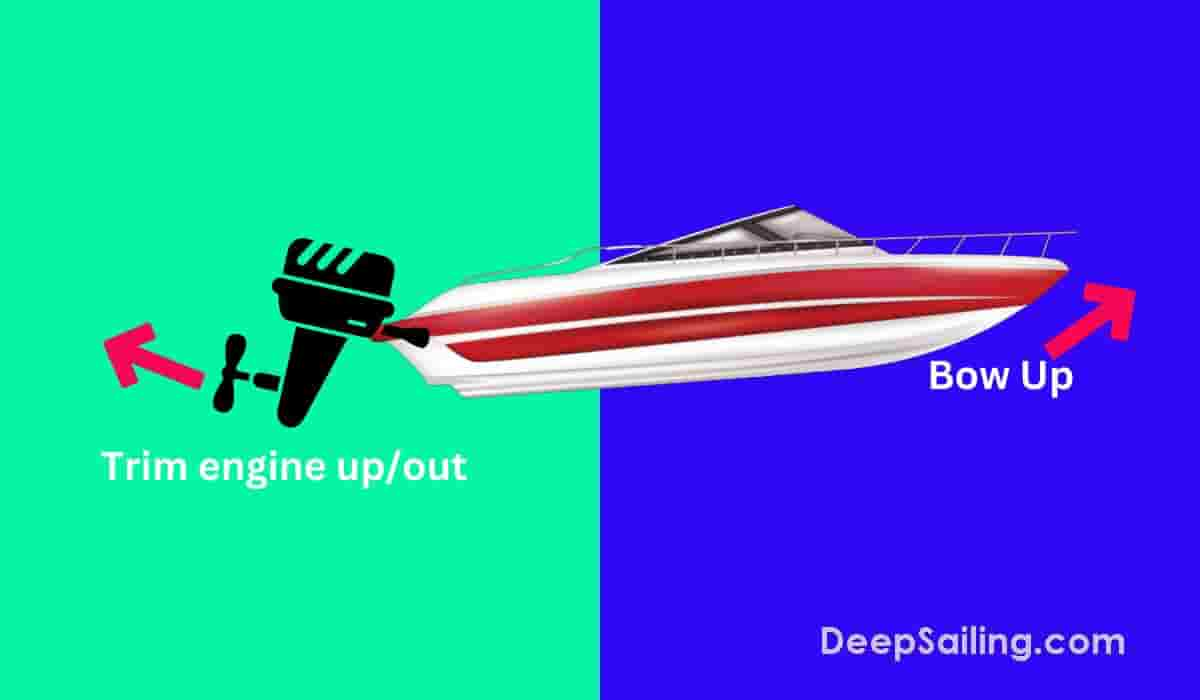
A boat on plane is a term used to describe a boat that has reached a sufficient speed to lift its hull from the bow out of the water and ride on the surface of the water. When a boat is on plane, it experiences less drag and can travel more efficiently and at higher speeds through the water.
To plane out a boat:
- Prepare the boat for planing out
- Trim the engine all the way in/down
- Increase the speed until the bow starts to rise
- Trim the boat engine up/out away from the transom until it's planed out
A boat will need to reach a speed of 15 knots or above and approximately 3,000 to 3,500 rpm to plane out for most recreational-type vessels. This plane out speed will vary based on the size of the boat, the type of motor, the type of hull, and the weather conditions.
1. Prepare The Boat For Planing Out
The first step in planing out a boat is to prepare the boat for planing out i.e. preparing the boat for traveling at a higher speed
To prepare the boat for planing out:
- Secure any loose items onboard: Secure any loose items like drinks items, boat accessories, fishing accessories, sunglasses, sun hats, etc. as they may become dislodged or lost as the boat planes out
- Secure the passengers: Make sure passengers are seated securely onboard. It is recommended that passengers remain seated and do not stand as a boat is planed out
- Ensure the hull is clean: Make sure there is no dirt like grime, grease, barnacles, etc. on the hull as this may prevent the boat from planing out
- Ensure the planing location is free from other boats: Ensure there are no other boats in your planing out path as this can cause a boat collision as you increase the speed of your vessel to plane it out
- Fill the engine with fuel: Planing out a boat requires a boat to use more power and a higher rpm which means a boater will need more fuel. Fill the tank will fuel before attempting to plane out the boat
Preparing the boat for planing it out will take approximately 15 minutes to complete.
The benefits of preparing the boat before planing it out are it will ensure the passengers are safe, no loose items will be lost, and no other boater's safety will be put at risk when the boat is on plane.
2. Trim The Engine All The Way In/Down

Trimming a boat refers to adjusting the distribution of weight and balance in the boat to optimize its performance on the water. This is done by adjusting the trim angle on the boat engine.
The second step of planing out a boat is to trim the engine all the way down/in.
On outboard boat motors or sterndrives, this will mean trimming the boat engine as far as it will go down so that the propeller shaft is at an angle to the boat transom.
On most recreational boats, the trim angle can be adjusted from the cockpit dashboard on the throttle lever.
Trimming the boat motor all the way down/in will force the bow of the boat to remain down rather than up in the water.
Trimming the boat motor down/in will take less than 10 seconds to complete.
3. Increase The Speed Until The Bow Starts To Rise
The third step of planing out a boat is to gradually increase the speed of the boat until the bow starts to rise.
To increase the speed, simply push the throttle level forward slowly. Wait until the boat reaches approximately 10 knots as this is the speed at which the bow will start to slightly rise.
Avoid jamming the throttle forward or making sharp steering adjustments as the boat increases in speed as this could cause issues for passengers or the stability of the boat.
Increasing the speed until the boat starts to rise from to bow should take approximately 1 minute.
4. Trim The Boat Engine Out/Up Away From The Transom

The fourth step of planing out a boat is to trim the boat engine up away from the transom as the boat increases in speed.
As the speed starts to increase over 10 knots, slowly start to trim the boat engine up/out. Trimming the boat engine up/out will cause the bow to rise easier.
Keep trimming the boat engine up until the boat starts to plane out which will occur when the boat reaches speeds of 15+ knots.
If the boat starts to porpoise and move violently up and down, it means a boater has trimmed up too much and they will need to slightly adjust the trim angle by trimming down the engine to get the perfect angle.
As a boater trims the boat motor up, the shape of the waves changes behind the engine and the rpm of the engine increases on its own without touching the throttle lever.
Trimming the boat engine up will take 15 to 25 seconds to complete.
Once this step is completed, the boat should be planed out.
Frequently Asked Questions About Planing Out A Boat
Below are the most commonly asked questions about planing out a boat.
How Long Does It Take To Plane Out A Boat?
Planing out a boat will take approximately 2 minutes to do for most recreational boats. However, this timeframe will vary depending on the water conditions, a boater's experience, the weight of the boat, the hull shape, and the power of the boat engine.
Why Does My Boat Porpoise When I Try To Plane It Out?
A boat will porpoise when a boater is trying to plane it out if the engine is trimmed too far up. Fixing the porpoising of the vessel can be done by slightly trimming down the engine to get the perfect angle for planing it out.
What Are The Benefits Of Planing Out A Boat?
The benefits of planing out a boat are:
- Faster speeds: When a boat is on plane, it can reach higher speeds of 20 knots+ compared to when it is moving through the water not on plane. This can be especially beneficial when traveling long distances or trying to get to a destination quickly as it can reduce the travel time
- Exhilarating experience: When a boat is on plane, it can be an exhilarating experience for passengers as the boat reaches higher speeds and the wind is blowing in everyone's faces
- Less drag: When a boat is on plane, it can reduce the drag levels by up to 30% compared to a boat not on plane
- Improved fuel efficiency: Having less drag means better fuel efficiency when a boat is planed out. Planing out a boat and then slightly reducing the throttle when the boat is on plane can improve fuel efficiency by 10% compared to traveling on the water with a boat not on plane
What Are The Risks Of Planing Out A Boat?
The risks of planing out a boat are:
- Boat collisions: When a boat is on plane, it is more difficult to stop quickly or maneuver easily as the vessel will be traveling at a speed of 15 knots or higher. This increases the risk of colliding with another vessel on the water
- Passengers getting injured: Having a boat on plane means the boat will be traveling at faster speeds. As a result, any sudden movements can cause sharp or rough which could result in passengers getting injured
- Boat damage: Increasing the speed of the boat can put unnecessary strain on the boat engine or the boat hull and increase the vibrations which can cause damage to the boat especially if the water conditions are rough
- Reduced visibility: When a boat is on plane, the bow is lifted out of the water which can reduce the boater's visibility and make it much more difficult to see obstacles and hazards in the water
What Should You Avoid When Planing Out A Boat?
When planing out a boat, avoid:
- Planing out the boat in rough seas: Avoid attempting to plane out a boat in rough seas as this can be a bad experience for passengers and it can damage the boat
- Having passengers sit at the bow of the boat: Avoid having passengers sit at the bow (front) of the boat as this will make it more difficult to plane out the boat with too much weight distributed to the bow of the boat
- Attempting to plane out the boat in a crowded area: Avoid attempting to plane out the boat in a crowded area as a boater may put the lives of others at risk as they travel at speed through the water in a crowded area full of people, swimmers and boats
- Trimming the engine too far up/out: When trying to plane out a boat, avoid trimming the engine up/out too far or the motor propeller may leave the water. This is called ventilating and it can cause the boat to porpoise
What Type Of Boats Can Be Planed Out?
The types of boats that can be planed out are speedboats, jet skis, motorboats, powerboats, deck boats, bass boats, pontoons, and center consoles.
What Type Of Boats Cannot Be Planed Out?
The type of boats that cannot be planed out are displacement hull boats, sailboats, ships, houseboats, super yachts and trawlers.
What Are The Best Type Of Boats For Planing Out?
The best type of boats for planing out are jet skis, powerboats, speedboats, and deck boats as they are easy to get to the speeds required for planing out and are not heavy in weight.
What Are The Worst Type Of Boats For Planing Out?
The worst type of boats for planing out are houseboats, ships, and super yachts as they are too heavy, have displacement hulls, and struggle to get to a speed capable of planing out.
What Should You Do If Your Boat Won't Plane Out?
If a boat struggles to plane out, a boater should check to ensure the hull is clean, ensure the correct level of boat engine trimming, ensure the speed of the boat is over 15 knots to reach planing speeds, and check that the water is not
rough. Getting trim tabs can also help with planing out the boat. Trim tabs help adjust the running angle of your vessel. They can help you get on plane faster and increase efficiency.
Alternatively, a boat may not plane out if the hull design is a displacement hull and in this case, there is nothing you can do to plane it out.
What Are The Factors That Affect A Boat's Ability To Plane Out?
The factors that affect a boat's ability to plane out are:
- Hull Design: The shape of the boat's hull can greatly affect its ability to plane. Boats with planing hulls are typically flat or have a V-shape at the bottom which helps the boat lift up and glide on top of the water when enough speed is reached. Alternatively, displacement hulls are designed to cut through the water and can be more difficult to plane
- Hull Cleanliness: Excessive dirt build up on the hull can negatively affect a boat's ability to plane out with dirtier hull bottoms much harder to plane out than cleaner ones
- Weight Distribution: The weight of the boat and its contents, including passengers and gear, can greatly affect its ability to plane. Boats that are too heavy in the stern can have difficulty planing and may require more power to get up on plane. Similarly, if the boat is too heavy in the bow, it may have a tendency to plow through the water rather than plane
- Engine Power: The amount of power a boat's engine can generate is an important factor in its ability to plane. The more power the engine has, the easier it will be to get the boat up on plane and maintain a speed of 15+ knots
- Weather Conditions: The conditions of the weather can affect a boat's ability to plane. Choppy or rough water can make it more difficult for the boat to get up on plane while calm water can make it easier to achieve and maintain planing speeds of 15+ knots
- Trim Angle: The trim angle of the boat engine can affect the ability to plane out a boat. If the boat is trimmed out/up too far, it can cause boat proposing rather than planing out whereas trimming the boat engine in/down too far can cause the bow of the boat to dig into the water rather than plane
One of these factors may be the reason why your boat won't plane out.